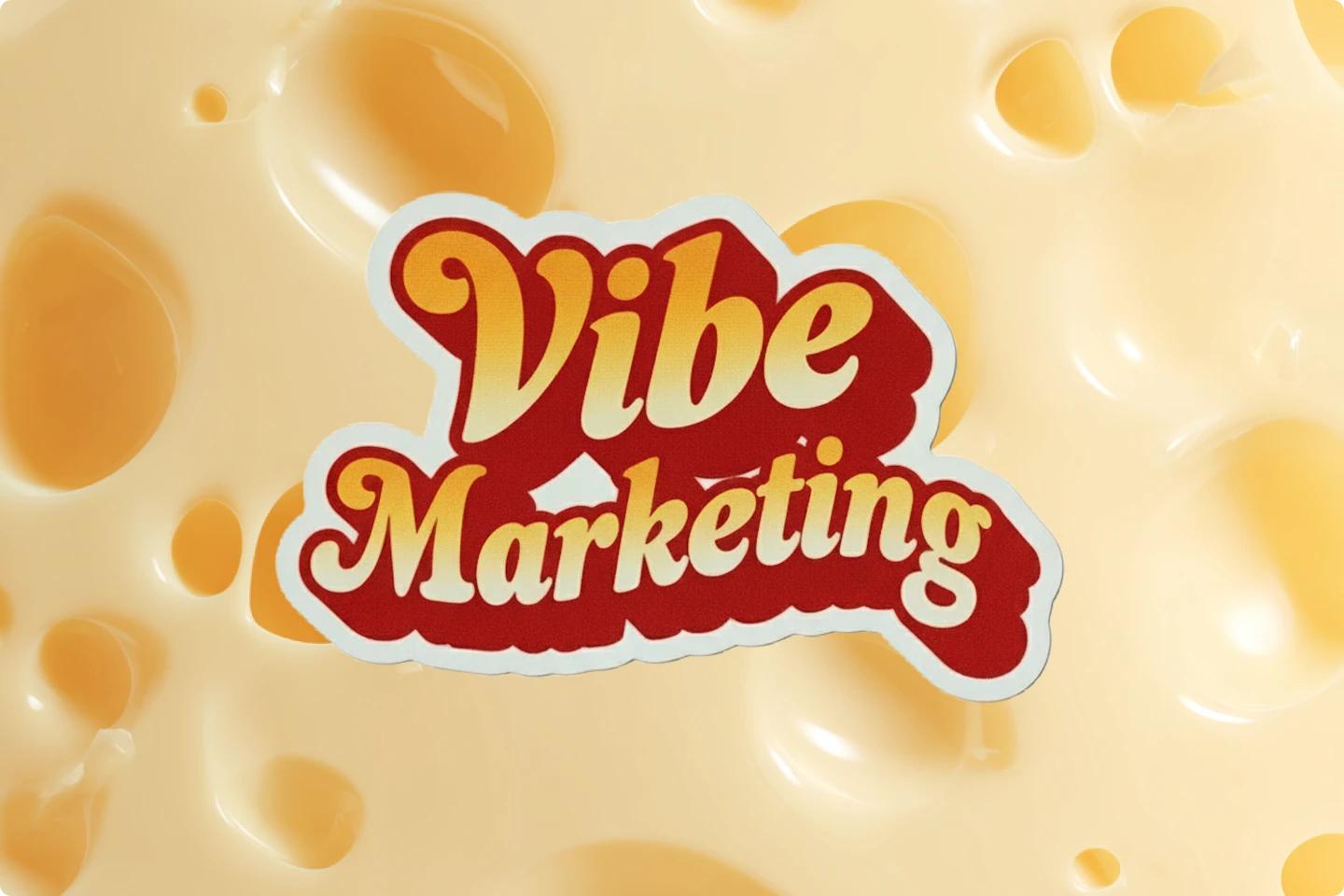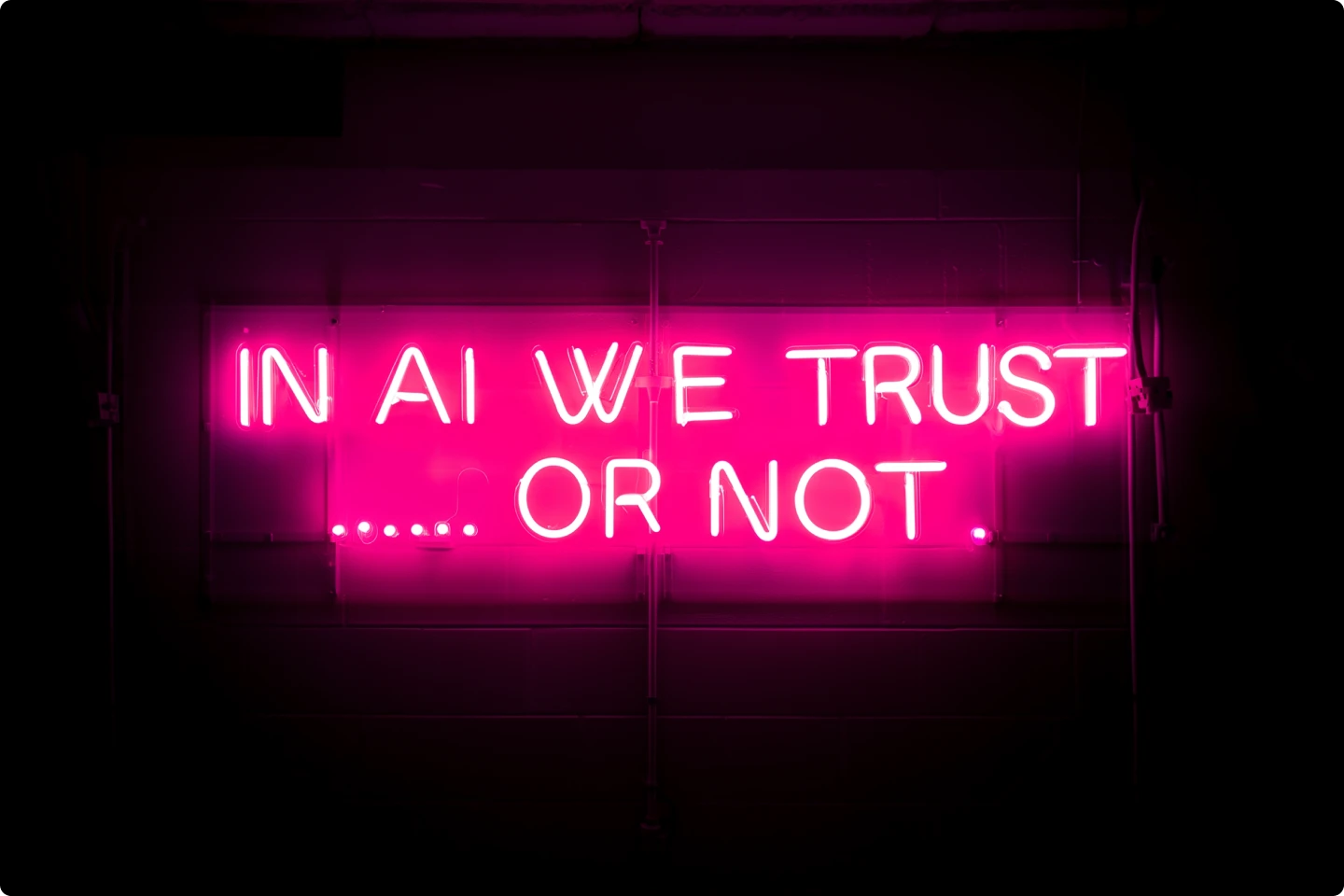How to use AI stock images to improve your blog design


A brief look at how AI stock images can enhance blog design by making content more engaging and visually appealing.
There are many blog examples online, and creating one is easier than ever. However, designing a blog is still a crucial and tricky part of the process for creators.
Creating an engaging and visually appealing blog is challenging, but there are ways to simplify the design process.
One of the quickest ways to improve blog design is with great AI stock images.
They can help you craft a blog design that not only looks snazzy but also makes your content shine.
I’ll tell you how Lummi AI stock photos can transform your work into a professional and stunning blog.
Why use AI stock images?
Humans are visual creatures. A well-placed image can make or break your blog design.
Whether you're searching for a Y2K aesthetic or a standard office scene, AI stock images from Lummi offer a variety of visuals that are high-quality and versatile.
Time saver
Finding the right image can be like searching for a needle in a haystack. With AI stock images, you can quickly find what you need without spending hours scrolling through endless galleries. This means more time for writing great content and less time hunting for visuals.
Consistency
Ever notice how some blogs look like a mishmash of different styles? AI stock images help maintain a consistent look and feel. This consistency makes your blog look professional and polished. Plus, it gives your readers a cohesive visual experience, which keeps them coming back for more.
Enhancing your blog design with AI stock images
Choosing the right images
Selecting the right images is crucial. They should complement your content, not distract from it. Think about what message you want to convey and choose images that enhance that message.
Tips for choosing images
- Relevance: Make sure the image relates to the content. If you’re writing about productivity, a serene beach scene might not be the best choice.
- Quality: High-resolution images make your blog look professional. Avoid pixelated or blurry photos.
- Emotion: Images that evoke emotion can help connect with your readers. Whether it’s happiness, curiosity, or nostalgia, choose images that stir feelings.
Integrating images into your layout
Now that you have your images, it’s time to integrate them into your blog layout. Placement is key. A well-placed image can draw attention to important sections of your content and make your blog more visually appealing.
Image placement tips
- Headers: Use images in headers to grab attention right from the start.
- Break up text: Long paragraphs can be challenging. Break them up with images to make your content more digestible.
- Highlight points: Use images to highlight key points or sections. This helps guide the reader’s eye and emphasizes important information.

Focusing on your target audience
Understanding and catering to your target audience is crucial for the success of your blog. AI stock images can play a significant role in this by helping to create content that resonates with your readers. Here’s how to keep your audience at the forefront when designing your blog:
Know your audience
Start by identifying who your readers are. This includes their demographics, interests, and pain points. Tailoring your content and visuals to meet their needs will make your blog more appealing and engaging.
- Demographics: Age, gender, location, and income level.
- Interests: Hobbies, topics they follow, and types of blogs they read.
- Pain points: Problems they are looking to solve or questions they need answers to.

Tailor your visuals
Once you have a clear understanding of your audience, choose images that appeal directly to them. This involves selecting visuals that reflect their preferences and lifestyle.
- Relatable imagery: Use images that your audience can see themselves in. For example, if your blog targets young professionals, use images of people in modern workspaces.
- Cultural relevance: Ensure the images you use are culturally appropriate and resonate with your audience's values and experiences.
- Contextual relevance: Align images with the topics and themes of your blog posts. For example, if writing about eco-friendly practices, use images that depict nature and mother nature.

Create a connection
Use images to build a connection with your readers. Visuals can evoke emotions and make your content more memorable.
- Emotional impact: Choose images that evoke the desired emotions, whether it’s inspiration, curiosity, or empathy.
- Personalization: Incorporate visuals that feel personal and relevant to your audience. This can include user-generated content or images that reflect their everyday life.
- Engagement: Use images to prompt interaction. For example, add questions or call-to-action text overlaid on images to encourage comments and shares.
The impact of AI stock images on user engagement
Having a visually appealing blog is more than just adding pretty images. Quality blog design also improves the overall user experience. Here are some ways.
Increased time on page
People are more likely to stay on your blog pages if it’s visually appealing. Images can help break up the text, making it easier to read and more engaging. This keeps readers on your page longer, reducing bounce rates.

Better comprehension
Images can also help improve comprehension. They can illustrate complex ideas, making them easier to understand. This is especially useful for instructional or educational blogs.
Social media sharing
Eye-catching images are more likely to be shared on social media. This increases your blog’s reach and brings in more readers. Make sure your images are optimized for sharing, with appropriate dimensions and file sizes.
Tools for creating and enhancing images
Even with great stock images, you might need to tweak them to fit your blog’s style. Here are some tools that can help:
- Canva: A user-friendly design tool that’s great for quick edits and custom graphics.
- Photoshop: For more advanced editing, Photoshop offers a range of features to fine-tune your images.
- Figma: Figma helps with blog design by allowing real-time collaboration and providing easy-to-use tools for creating cohesive layouts.
Practical tips for using AI stock images
There are various ways you can use AI stock images to improve your blog design. Here are a few of the most practical and easiest ways they can help.
Optimize for web
Large images can slow down your site, leading to a poor user experience. Optimize your images for the web by reducing file size without sacrificing quality. Tools like TinyPNG can help with this.
Use alt text
Alt text helps with SEO and makes your site more accessible. Describe the image in a way that’s helpful to those using screen readers. This small step can improve your blog’s reach and user experience.
Stay consistent
Using a consistent style for your images helps create a cohesive look for your blog. Stick to a color palette and style that matches your brand. This makes your blog instantly appealing and visually pleasing.
Experiment and analyze
Don’t be afraid to experiment with different types of images and placements. Use analytics to track what works best. Pay attention to metrics like time on page, bounce rate, and social shares to see how your images impact engagement.
Benefits of using AI stock images
Lummi provides a vast library of AI-generated stock images, perfect for any blog. Whether you've started a blog about tech, travel, or food, you’ll find what you need to enhance your content. This variety ensures you can always find the perfect image to complement your blog topics and website design
1. High quality
Lummi offers high-resolution, professionally curated images. Forget about pixelation or blurry visuals—your blog will always look amazing.
Each image is handpicked to ensure top quality, so there’s no need to sort through mediocre photos. The images are sharp, clear, and perfect for whatever you need.
With Lummi, maintaining a professional and polished look for your blog is effortless. Now you’re workflow won’t suffer from searching through low-quality visuals, and you’ll always have, high-res images available.
2. Ease of use
Lummi’s interface is user-friendly and intuitive. You can quickly search for images, preview them, and download them with ease. This saves you time and makes the process of finding the right image straightforward.
- Simple search: Find what you need quickly with easy search options.
- Adjust your photos: Make adjustments like contrast, brightness, luminance, and more to make sure your image is ideal.
- Quick downloads: Get the images you need in just a few clicks.
3. Always and forever royalty-free
Lummi offers all its images for free, both for personal and commercial use. This makes it an ideal resource for bloggers looking to enhance their content without worrying about costs or attribution.
- Free for all uses: No cost for personal or commercial projects.
- Royalty-free: Use images without needing to attribute credits to the creator.
- Hassle-free licensing: Simplifies your content creation process.
4. Suitable for all blog topics
Whether you’ve started a blog about tech, travel, food, or any other topic, Lummi’s diverse library ensures you can find images that match your content perfectly.
- Versatile selection: Images for every type of blog and topic.
- Enhances content: Visuals that complement and enrich your blog posts.
- Improves engagement: High-quality images that capture your readers’ attention.
By using Lummi, you can enhance your blog design with high-quality, easy-to-use, and free images that suit any blog topic. Whether you’ve just started a blog or are looking to improve your content marketing strategy, Lummi has you covered.
Common pitfalls to avoid
When using AI stock images, it's important to avoid certain common mistakes. These pitfalls can affect the overall user experience and effectiveness of your blog. Here’s how to sidestep these issues.
1. Overloading with images
While images enhance your blog, too many can overwhelm your readers. Balance is key.
Use images to support your content, not overshadow it. Stick to a few well-placed visuals that reinforce your message.
- Enhance content: Choose images that add value to your text.
- Avoid clutter: Too many images can distract and confuse readers.
- Support your message: Select images that directly relate to your content.
2. Ignoring mobile users
Many of your readers will view your blog on mobile devices. Ensuring a good mobile experience is crucial.
Make sure your images are responsive and look good on all screen sizes. Test your blog on different devices to see how everything scales.
- Responsive design: Ensure images adjust correctly on various screens.
- Test on devices: Check your blog on smartphones and tablets.
- Optimize for mobile: Ensure quick loading times and clear visuals.
3. Forgetting image credits
If you use free images that require attribution, remember to give credit. It's ethical and often a legal requirement.
Lummi provides clear guidelines on how to attribute images, making it easy to comply. Always check the requirements for each image you use.
- Give credit: Follow the attribution guidelines provided.
- Legal compliance: Avoid legal issues by crediting images properly.
- Ethical use: Respect the creators by acknowledging their work.
4. Not considering all users
Making sure everyone can view your content is crucial for an inclusive blog. Include alt text for images and consider the needs of users with disabilities.
Alt text helps those using screen readers and improves your SEO. Think about the different ways people access your content.
- Alt text: Describe images to aid screen readers.
- User needs: Consider making all of your designs accessible for all users.
- SEO benefits: Improve search rankings with proper alt text.

By avoiding these common pitfalls, you can create a more effective and engaging blog. Remember to balance your use of images, ensure mobile compatibility, credit your sources, and consider all users. These steps will help you build a better blog that resonates with a wider audience.
Different types of blogs and how Lummi can enhance them
Lummi AI stock images can significantly improve the visual appeal and engagement of various types of blogs. Whether you're writing about tech, lifestyle, photography, web design, travel, or AI, the right images can make your content more engaging and accessible. Let’s explore how Lummi can help each type of blog.

Tech blogs
Tech blogs often deal with complex concepts that can be tough for readers to grasp. Simplifying these ideas with Lummi AI stock images can make a big difference.
Adding diagrams and visuals can make your content more engaging and easier to understand. Readers will find your explanations clearer and more captivating.
One tech blog that crushes this is
Lifestyle blogs
Lifestyle blogs thrive on vibrant, high-quality images that capture the essence of different experiences. Using Lummi images can make your lifestyle posts more appealing.
Using beautiful visuals can increase your social media traffic as followers eagerly share your stunning posts. This helps build a strong online presence.
Photography blogs
Showcasing high-resolution images is crucial for photography blogs. Lummi’s high-quality photos can help you present your work in the best light.
Clarity and beauty in your visuals can lead to more comments and shares. This increases reader engagement and enhances your blog’s appeal.
If you're looking for a great example of a photography blog, It's Nice That has an incredible section of photography posts that are beautifully curated.
Blogs for web designers
Web designers need to showcase their work in a way that highlights both aesthetics and functionality. Lummi images can help create visually appealing examples and case studies.
Your blog posts can become a go-to resource for design inspiration. This helps attract more readers and potential clients to your blog.
Another great example of a blog for web designers is the Stories section on Dribbble.
Travel blogs
Travel blogs benefit greatly from visually capturing the essence of each destination. Using Lummi’s high-quality travel images can transport your readers to exotic locations.
Stunning visuals inspire wanderlust and can significantly increase your blog's social media shares and followers. This helps grow your audience.
AI blogs
Musho.ai is a great example of a blog that uses Lummi images to enhance its content. Musho.ai regularly integrates high-quality AI stock images to illustrate innovative concepts and applications of artificial intelligence.
This not only makes their posts more engaging but also helps readers better understand complex AI topics. This boosts the blog’s authority in the AI community.
Go make your blogs look beautiful
Using AI stock images can significantly transform your blog design. High-quality visuals make your content more appealing and engaging.
Want more tips to elevate your blog design? Head over to the Lummi blog to get awesome insights you can use today.
TL;DR FAQ
What types of blogs benefit from using AI stock images?
All types of blogs can benefit, including tech blogs, lifestyle blogs, photography blogs, travel blogs, and AI blogs. High-quality visuals enhance the appeal and engagement of any content.
How do I choose the right images for my blog?
Choose images that are relevant to your content, high in quality, and evoke the right emotions. Consider the message you want to convey and select visuals that support it.
Why is image quality important for my blog?
High-quality images make your blog look professional and trustworthy. They improve readability and make your content more engaging, which can increase reader retention.
How can I make sure my images look good on mobile devices?
Ensure your images are responsive, meaning they adjust correctly on various screen sizes. Test your blog on different devices to check how images scale and appear.
Do I need to give credit for images from Lummi?
No, all Lummi images are royalty-free for personal and commercial use. You don't need to attribute credits to the creator, which simplifies your content creation process.
How can images improve my blog's SEO?
Using alt text for images helps search engines understand the content of your images, improving your SEO. It also makes your blog more accessible to users with disabilities.
What is Lummi, and how can it help my blog?
Lummi is a platform offering a vast library of AI-generated stock images. It helps bloggers find high-quality, relevant images quickly and easily, enhancing the visual appeal and engagement of their blogs.
A side-by-side of Lummi stock photos and ChatGPT image generator






